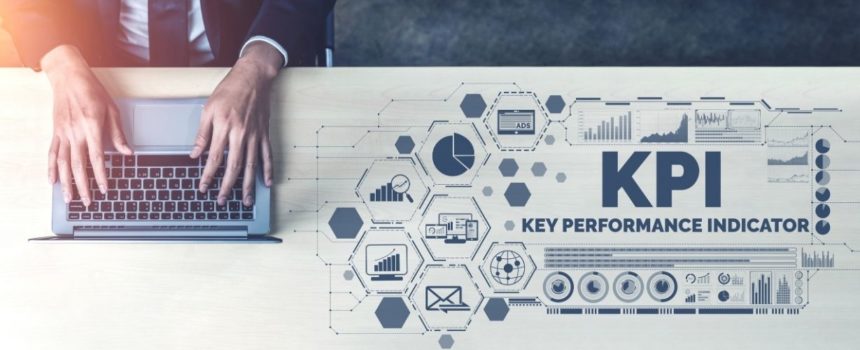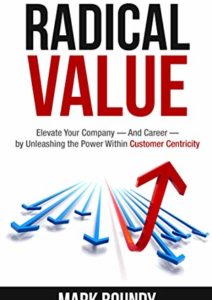Happy New Year; now let’s get to work…working on the right things.
Good Key Performance Indicators (KPIs) are useful management metrics, but great KPIs drive elite behaviors.
In Radical Value, I observe that every company exists only to deliver more value to customers than it costs to produce. So, do your KPIs reflect value’s importance? I find that few do. Customer satisfaction scores are close, measuring perceived value delivered, but are “too-late-to-fix-anything” trailing indicators – nothing to manage to.
Here is a list of value-focused KPIs/metrics you might add to your mix…or substituting for activity-based ones like dials, calls, demos, etc.
Differentiated, Outcome-Weighted Lead Scoring.
Early in a typical customer journey, prospects interact with content (clicks, opens, downloads, contact-me requests, etc.). Marketing organizations often track and score these interactions to determine lead quality. This is good, but KPIs for content interaction can become elite if you refine those KPIs, scoring individual content items by value presented.
- Lower scoring for content about company background/image, features/benefits and typical “product/service push” content.
- Medium scoring for genericoutcomes: ones customers achieve from most or all competitors in a category. Outcomes are better than the low-value content above, but not as good as…
- High scoring for customer outcomes (either business or personal) that your differentiation helps them achieve. For example, when a prospect downloads/reads a white paper on an outcome that only your service (or product) can help them achieve, they should score higher than someone reading an e-book describing your generic product category.
Value-weighted lead scoring incentivizes your content creators to create more focused content, and gives higher quality leads.
Deal Winning Value Identified & Validated by Buying Cycle Stage
This metric incentivizes more complete value selling. Deal winning value (DWV) occurs when a customer validates value of your offer greater than its costs. In a simple example, your seller confirms DWV when a customer validates that you alone (or best) can solve their seven-figure problem with your six-figure solution.
Sales conversations should guide prospects to quantify (usually financially) the value of the outcomes of doing business with you. Once they do, that opportunty has “deal winning value” to the prospect. DWV strongly predicts success against all competitors including no decision. Sellers must always walk prospects through these conversations, and the earlier they do it, the better.
DWV is also a leading indicator driving and predicting forecast accuracy because value is why customers buy. This metric therefore enhances “forecast accuracy” (a trailing indicator).
“First-in” Discovery Conducted, Early Access Achievement.
Sales leaders: you know how valuable being a credible, valued advisor is, and encourage it. Now, train, equip, and track how well they’re doing so. Track when your sellers are “first in” to a customer’s buying process as a valued consultant… facilitating and shaping the buying process before the prospect invites competitive sellers in.
Metrics could be:
- Specs written around our product, or some articulated preference for your differentiation.
- Deal winning value (see above section) established before competitors are involved, or by some early customer buying phase (your sales stages are built around your customer journey, right?). If you use one of the major methodologies (MEDDICC/MEDDPICC, Strategic Selling, TAS, etc.), emphasize “value-uncovering” behaviors from your methodology at early stages…combined with focused training and coaching, because most methodologies gloss over these deal-winning behaviors.
- Some sales forces might use “significant discovery and value building before RFP issued”.
Value of Product/service Improvement Ideas Generated
Value-focused companies relentlessly work to uncover what kinds of outcomes customers want them to enable. As a former new product manager, I’ve seen precious few KPIs around closing the loop between customer’s world and seller’s offerings (and no, most “voice of the customer surveys don’t produce guidance on potential offers). Over decades, I’ve learned that insightful customer interactions often drive the best product enhancement and new product ideas.
What if you developed a metric that tracks ideas developed via customer conversations:
- By non-sales roles. You know, those people who have a lot of contact – and higher trust – with your customers than your salespeople?
- By sales roles, the people who should be understanding the customer’s world, and whose job is helping customers achieve outcomes they had not anticipated.
Encourage competition between those two groups. Train your people to have conversations that quantify the value of new ideas, just like the conversations around DWV.
Price Premiums Achieved or Discounts Avoided
This KPI is one of your most profitable, and almost nobody does it.
Tracking price premiums achieved measures how your sales team is at building and selling value. Most companies don’t even analyze their discounting behavior; even fewer measure price premiums achieved – they completely avoid KPIs around the most important lever to profitability.
Customers mentally weigh price against value. Specifically, they weigh your price premium against your differentiated value. Your sales team should be so adept at selling value that they can achieve pricing power… generating profitable sales.
Another possible KPI tracking discounting/price exceptions avoided – especially if discount spend can be analyzed by salesperson, region, customer, product, end-of-month/quarter, etc. This kind of discounting analysis yields huge insights for product competitiveness, sales coaching (selling to value), and more.
Renewal rate/cross-sell/upsell rates and Economic Value Delivered
Changes in customer churn/runoff are a normal KPI that most companies track, but again, those figures are trailing indicators; not predicting or avoiding disaster.
When combined with some of the items above. Metrics around proving out Deal Winning Value projections are key. Working with all customers to measure value realized vs. projected is how a renewal conversation should start. Ironically, the simple act of measuring outcomes is a supremely powerful retention tool.
Summing Up
We act as we’re measured. So, start measuring more productive behaviors to drive more productive behaviors. Contact me if you’d like to learn more, or have any questions.
To Your Success!













Comments